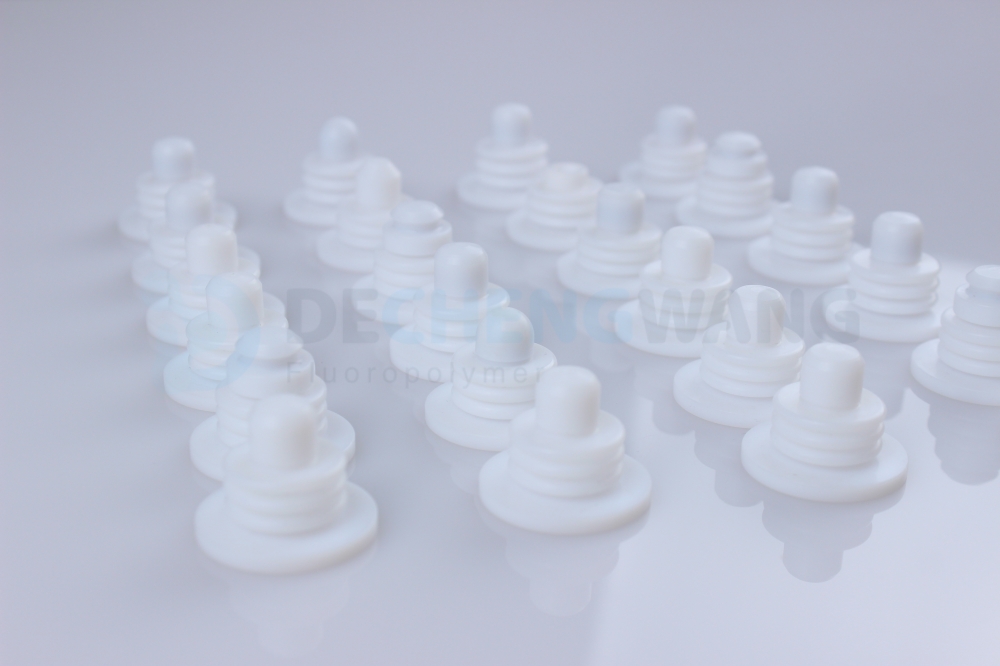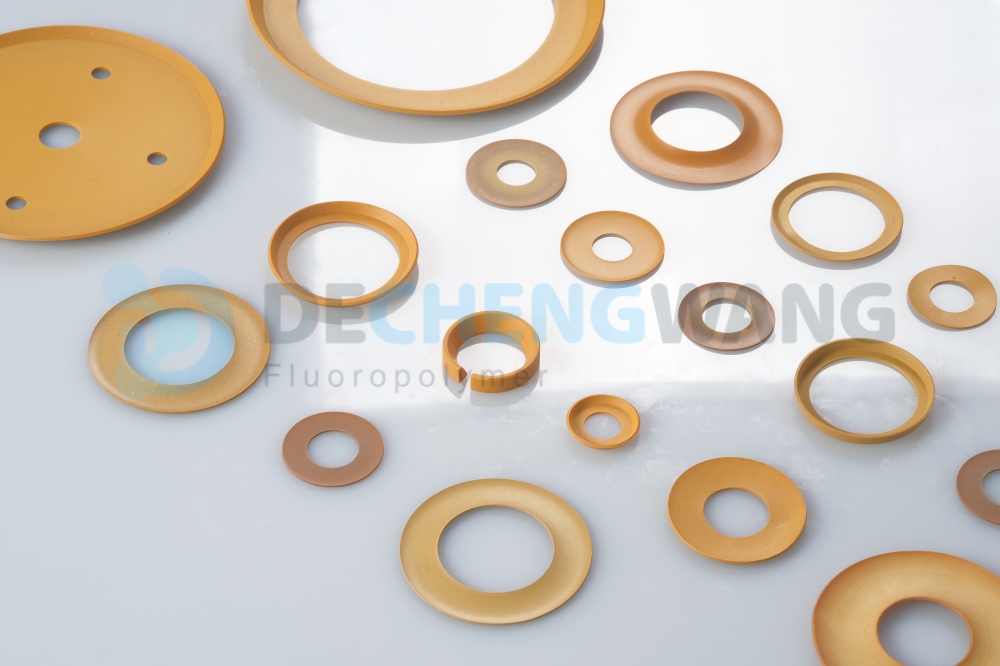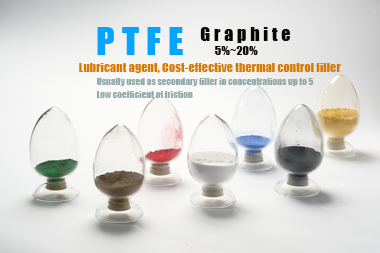As the “major client” of back-up rings, O-rings are employed in sealing applications in several industries. They are made up of an elastomer donut-shaped piece that seals the mating surface of two components and can be sourced from a reliable PTFE products manufacturer that also produces PTFE lip seals. However, sometimes these o-rings can experience extrusion failure. This can happen when the internal pressure of a system becomes too high causing the o-ring to extrude into the clearance gap. Soon enough the extruding material will start to get nibbled away causing loss of material and if enough material is lost, the sealant functioning of the o-ring will fail. To prevent such a failure from occurring, back-up rings are employed. Back-up rings prevent o-rings from entering the clearance gap in a static radial sealing, preventing loss of material and seal failure.
Definition of Back-up Rings
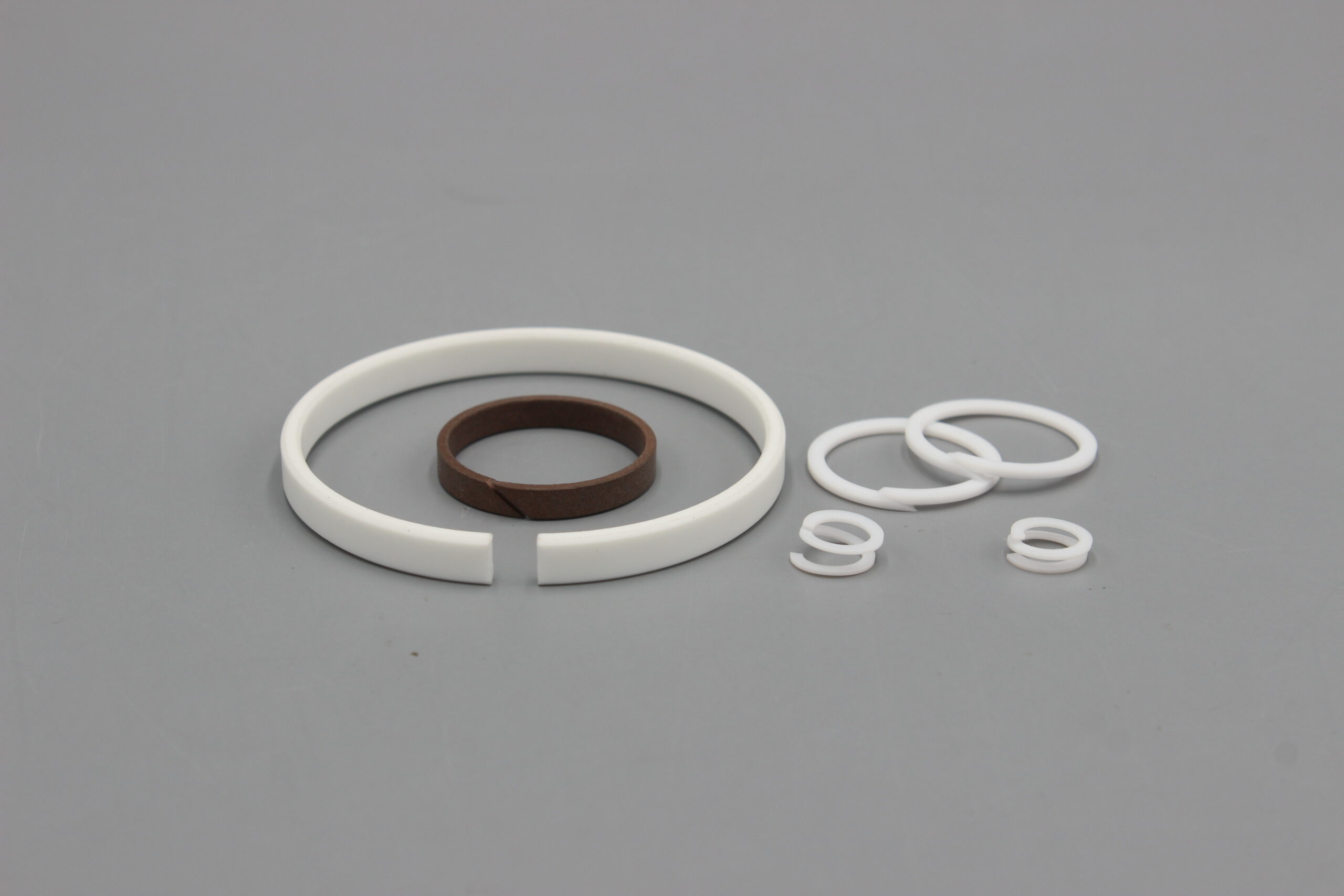
If the primary O-rings fail, the back-up o-rings are intended to stop leakage. They act as a back-up plan that is used if the primary O-ring fails. Back-up rings do not provide any sealant functions in and of themselves but rather work alongside O-rings to prevent materials like coolants and lubricants in a hydraulic machine from leaking out. They are often positioned on the downstream side of the gland though they can also be added to either side of the o-ring to provide a double-acting seal.
Back-up rings are also known as anti-extrusion rings since their main function is to prevent o-rings from entering the clearance gaps due to internal pressure. They avoid the seal from experiencing premature failure.
Applications of Back-up Rings
Back-up rings are similar to o rings in having a circular shape (though some differences are possible, as in the case of the scarf-cut or spiral back-up ring). Like o-rings, they too are made up of heat and pressure-resistant elastomers. However, unlike O-rings, back-up rings are only exposed to liquids like coolant, oil, or lubricant in case the o-ring experiences any extrusion failure.
A primary O-ring is used in conjunction with the back-up O-ring. Directly surrounding the mating surface of the two pieces is where the main O-ring is situated. Even if the primary O-ring fails, liquid or gas will be contained.
Applications that are typical include:
- Pressure is applied on both sides of the o-ring in piston styles glands. Here two back-up rings are used on either side of the O-ring to provide additional support and prevent extrusion failure.
- Valve and cylinder bodies often utilize o-rings as sealants. However, they often experience pressures above 1500 psi causing the use of back-up rings to become pertinent.
- Dynamic applications that exceed a pressure limit of 100 bar also require the use of back up rings.
- Static applications on the other hand require back up rings for pressures exceeding 950 bar.
- For the most significant support in many applications, it is recommended to utilize two back-up rings—one above and one below the O-ring.
Why Are Back-up Rings Needed?
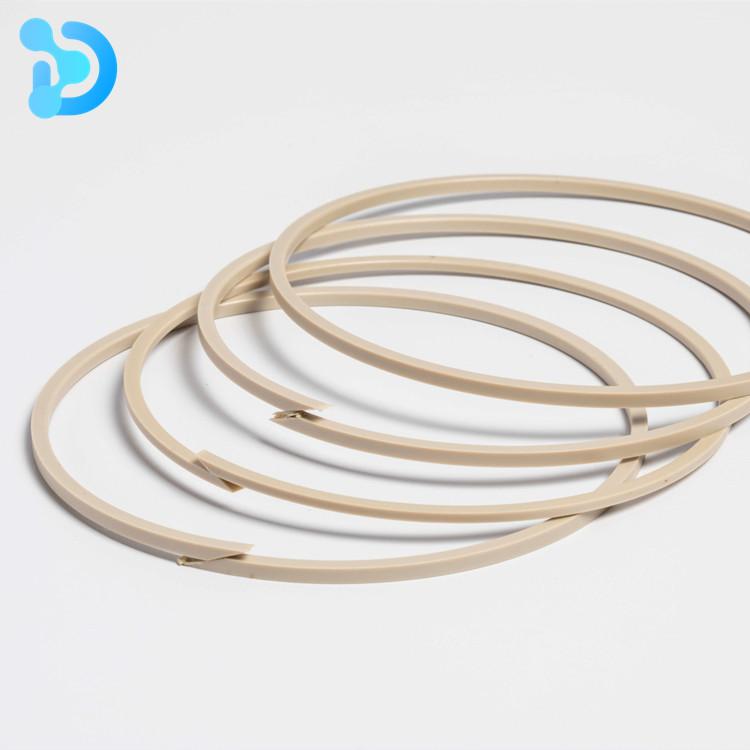
Not just O-rings, but nearly any type of seal can experience extrusion under pressure. To reduce the amount of extrusion in the sealing gap of the seal housing, rings are usually formed of a more challenging material than the seal itself. They accomplish this by tightly fitting the housing to support the sealing element.
When higher sealing and system forces are anticipated, the fit of the pieces must be more exact. You should also consider the environment in which any specific seal and its back-up rings are going to be used. As a back-up ring may enhance the friction already present in a system, it is also crucial to consider the level of acceptable friction losses to provide the best solution.
Material of Back-up Rings
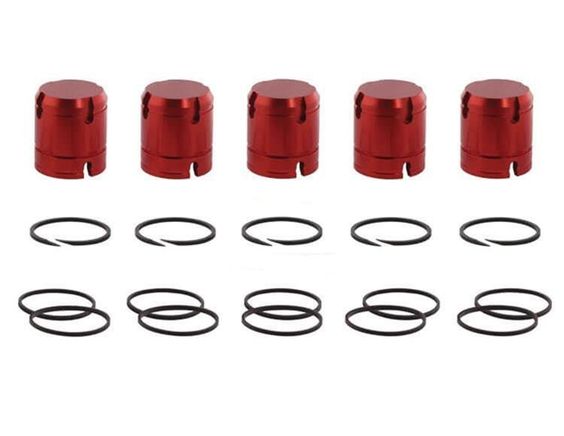
A back-up ring is created from a material that is harder than the o-ring but resilient enough to bend under pressure to close the extrusion gap. To use a back-up ring or rings, o-ring grooves are dimensionally enlarged and supplied with back-up rings.
Back-up rings can be made of several materials, including PTFE, metal, and hard rubber. The advantage of PTFE is that it offers extremely low friction for dynamic applications. Even if pressure comes from only one side of the O-ring, it is advised to use two back-up rings in each groove, one on each side of the O-ring, to avoid incorrect installation.
A back-up ring’s primary condition is not collapsed or cold flow. An extra-hard, extrusion-resistant material, such as PTFE, high-durometer Nitrile, or Viton (FKM), is used for back-up rings.
Depending on the direction of pressure during the sealing application, you can utilize one back-up ring or two back-up rings. When in doubt, it is advisable to substitute two back-up rings for each o-ring.
Although back-up rings are not seals alone, they are frequently utilized in support or spacer roles alongside O-Rings in high-pressure applications.
Back-up rings come in a variety of materials such as:
- PTFE
PTFE, also known as Teflon, has a huge advantage when it comes to back-up rings because it offers extremely low friction for dynamic applications. Look no further than PTFE if you need a highly flexible, non-stick material that is also electrical, chemical, and thermally resistant. It is frequently used in containers and piping for reactive and corrosive chemicals since it is non-reactive, partly due to the strength of the carbon-fluorine bonds.
- Filled PTFE
PTFE is a highly flexible material but to prevent it from being damaged by heavy loads, the filler is added to it. There are several types of fillers, many of which increase the thermal conductivity of PTFE. Some of the most widely used fillers are glass, carbon, graphite, polyamide, etc. Out of these, glass as a filler is most widely employed in back-up rings since it makes PTFE more wear-resistant.
- PEEK
PEEK or Polyether ether ketone is a colorless organic thermoplastic used in engineering applications. It has a high chemical resistance and can withstand a wide range of temperatures without it affecting its dimensional stability. It is strong, rigid, and has a low moisture uptake, all of which contribute to it being a suitable material to manufacture back-up rings from.
- Nylon
Nylon is a widely used material in back-up rings because of its elasticity. The family of synthetic polymers is commonly used to create a wide range of consumer products and clothes. Nylon can withstand any sport because of its superior strength and abrasion resistance.
Nylon offers excellent wear and impact resistance. Nylon back-rings have high tensile strength and modulus of elasticity. They are able to withstand high temperatures as well as abrasion.
- Hytrel
A thermoplastic polyester elastomer with exceptional flexibility, steady mechanical performance across a broad temperature range, and simple processing features called Hytrel. Its exceptional qualities make it suitable for a variety of difficult applications where a flexible component needs to have mechanical strength and endurance, including back-up rings. Hytrel back-up rings have a wide range of fluid compatibility, abrasion and temperature resistance. They are ideal for static as well as dynamic applications.
Examples include impact-absorbing components, bushing, hose, tubing, etc.
What Are the Different Types of Back-up Rings?
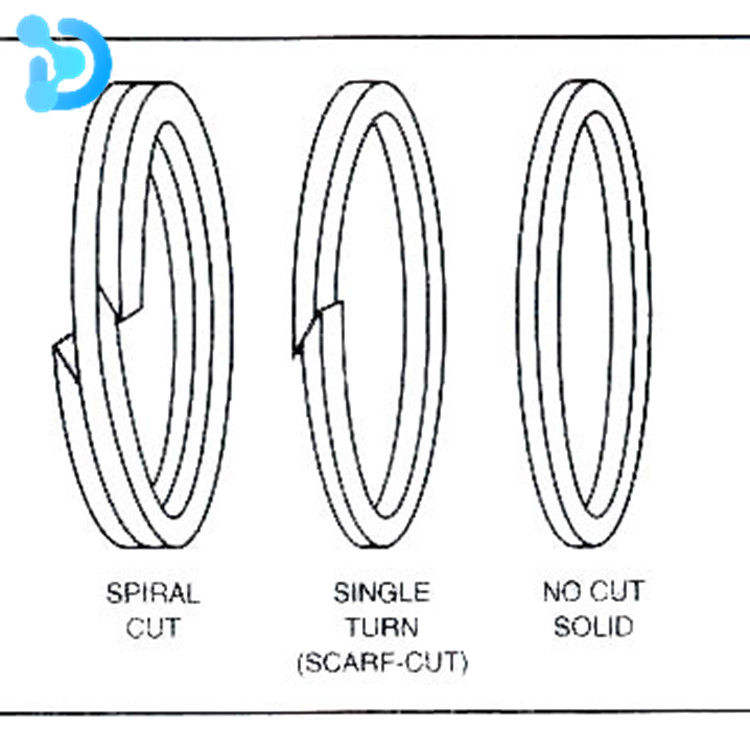
- Solid Rings
Solid or uncut rings find a wide range of use due to their ease of installation. They are especially used in rods and pistons. Despite being uncut, they do have the ability to stretch over surfaces and are found in hydraulic cylinders, high-pressure valves, and hydraulic systems.
- Split Rings
The scarf cut or the split ring has a cut in it at a 30 or 45-degree angle and is widely used in high-pressure hydraulic systems. It is often made with materials having a high modulus of elasticity and tensile strength making it useful in all kinds of applications. The split in the rings allows it to stretch in high-pressure systems which fills the extrusion gaps. However, back-up rings made with high-modulus materials can cause nibbling of the o-ring in extreme pressures so a softer ring should be installed in between the scarf-cut ring and the o-ring to avoid this sealant failure from occurring.
- Spiral Wound
Overlapping, coil-shaped material makes up spiral back-up rings. When there is increased pressure, the overlapping coil comes in contact with more surface area hence they offer additional support. However, the cost and availability of these rings ensures that they are used for specific functions only.
There are several kinds of back-up rings available in the market which are utilized in hydraulic functions depending upon the temperature, pressure, and extrusion gaps generated in the system. While solid rings are used more commonly, high-pressure service conditions can also require the use of the split or the spiral wound back-up ring. Back-up rings made efficiently during the PTFE back-up ring manufacturing process can assist in system functioning by removing any worries about breaking rods or bores because of excessively small E-gaps.
Factors That Need to Be Considered While Selecting Back-up Rings

- Performance
Before visiting the Back-Up Ring finder, there are a few things to consider when employing an O-Ring in an application. A small-diameter back-up ring will work well if they are for a short-stroke application. Long-stroke applications are ideally suited for thick cross-sectional back-up rings.
Small nuances must be perfected for back-up rings to function correctly and endure the predicted lifetime. Any dynamic rod or piston used in engineering applications strongly depends on hydraulic and pneumatic seals for a reasonable lifespan. The strength of the seal in the hardware must maintain its effectiveness.
- Suitable O-Ring Materials
If the materials used in the application are incompatible, the O-Ring may deteriorate. The seal material may bulge when the improper component causes liquids to accumulate and seep. O-Rings need to function without any substances that could corrode them to be used over an extended period.
- Temperature
It is necessary to evaluate every temperature extremes the back-up ring will encounter while performing. Extreme cold can cause an O-flexibility, the ring’s produced with a particular amount of elasticity, to disappear and become unstable. A different possibility is that if the back-up ring used for the application cannot withstand high temperatures, it might deteriorate when exposed to them.
- Pressure
It is crucial to understand the stresses the back-up ring will experience when used. Before the ideal back-up ring application is discovered, several numbers and statistics in your industry must be calculated.
- The Ideal Size and Fit
The O-Ring’s material selection needs to be appropriate for the elements it will be interacting with. The ring can extrude if the material is too soft for the application and it can swivel and loosen if it is too tight. This will cause leaks and a decline in durability and performance. With the aid of a professional, choosing the ideal back-up ring for the many engineering projects now in progress is always made simpler.
Conclusion
Back-up rings supplement the functioning of o-rings. They merely act as a back-up plan. The back-up O-ring will ensure that no fluid or gas escapes from the machine utilized if the primary O-ring undergoes added pressure or temperature stress. The back-up teflon ring will ensure no fluid or gas escapes from the machine utilized if the primary O-ring experiences some faults. They are of several types and manufactured from a variety of materials such as PTFE remains highly favored due to its diverse range of characteristics.
Since they are essential to the manufacturing process and utilized in several industries, back-up rings need to be sourced from a reliable hardware manufacturer. Contact Dechengwang today to learn more about back-up rings.

